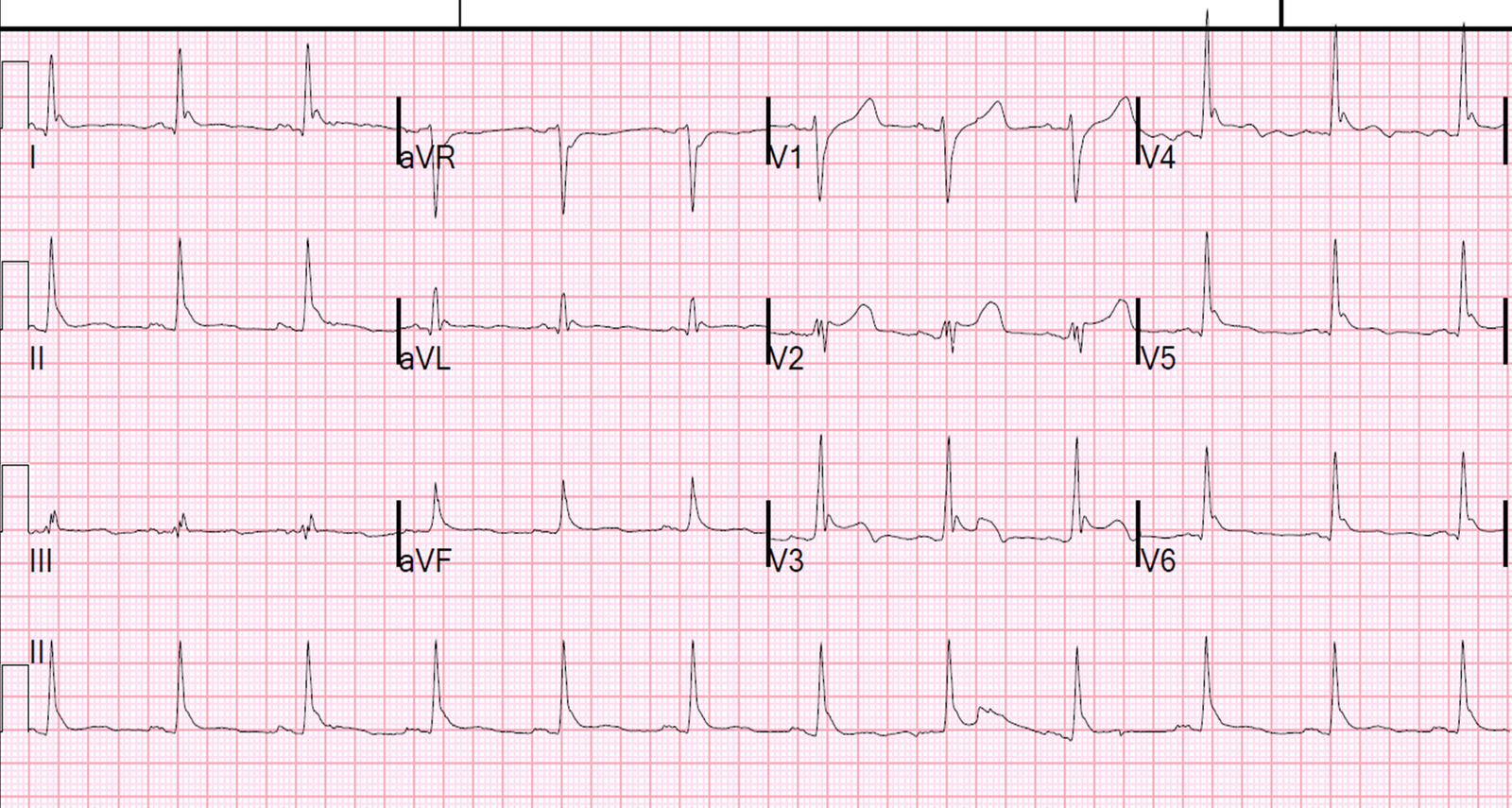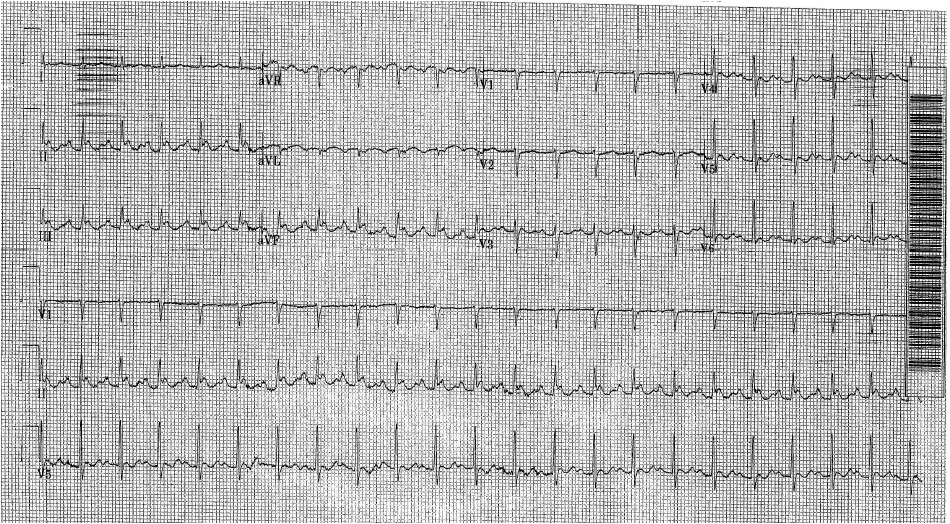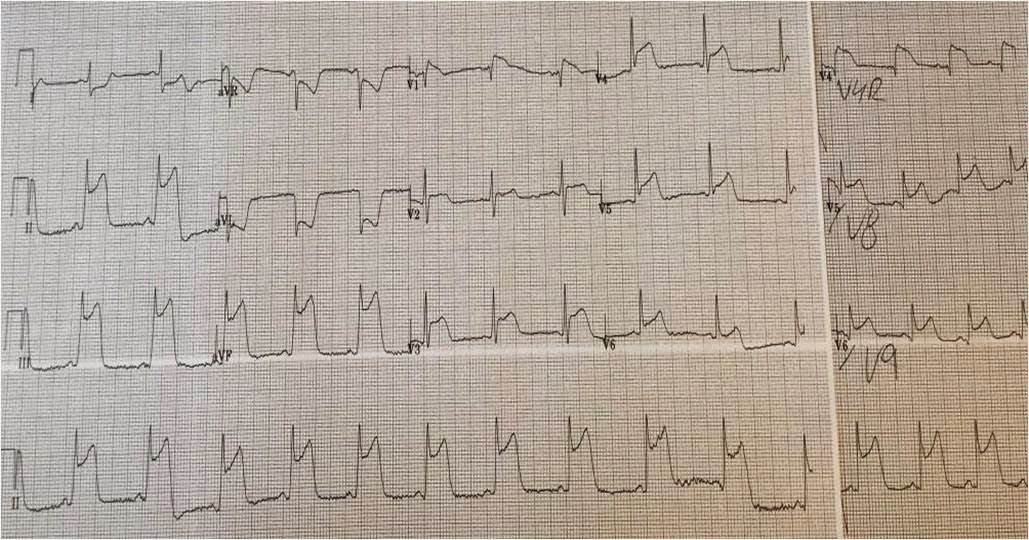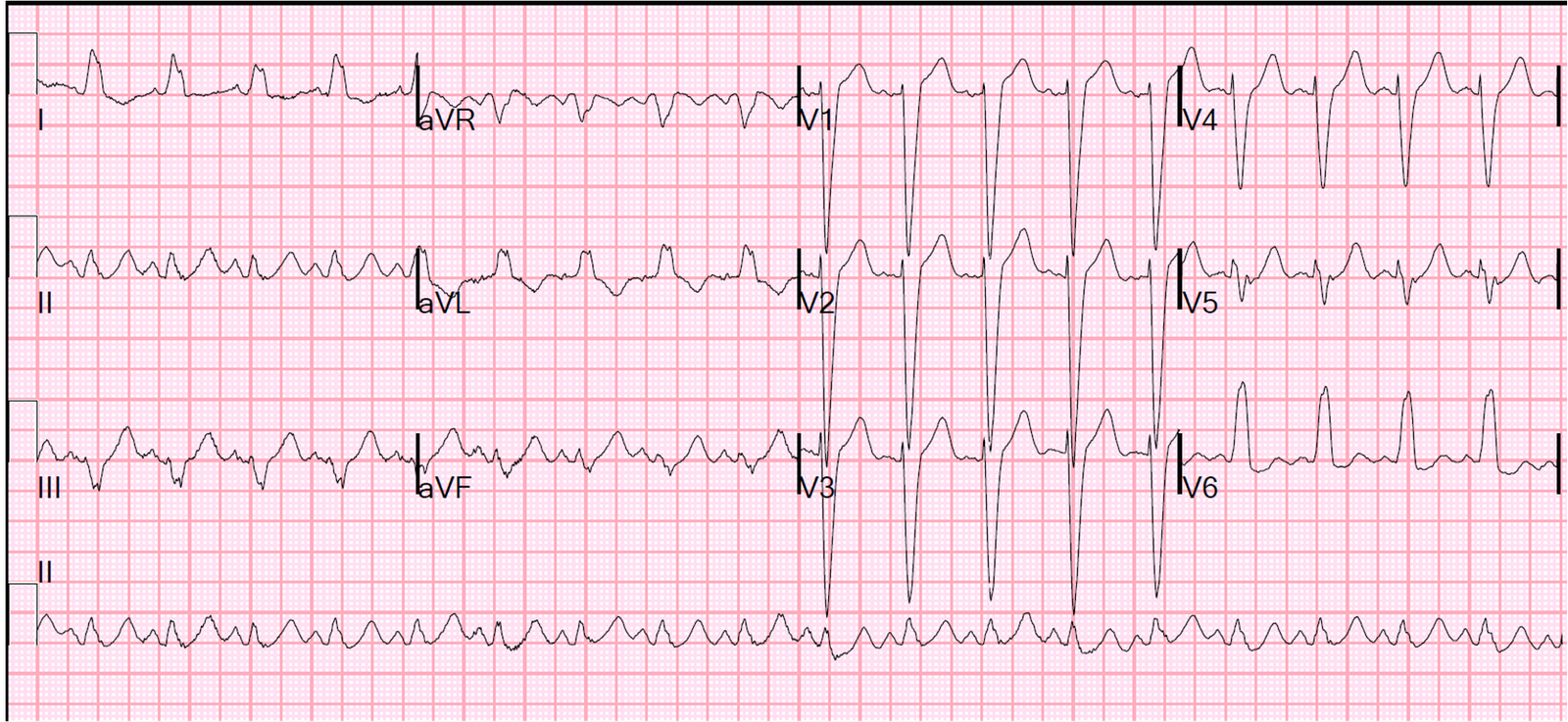What is the diagnosis here?
 |
| The computer read was ****Acute STEMI****What is really going on? See Answer Below |
This is a trauma patient (motor vehicle collision) who arrived with a temperature of 27 degrees Celsius. Among many injuries was a traumatic diaphragmatic hernia, which may also affect the ECG.
The prominent features are: relative bradycardia (one would expect in this ill trauma patient) and Osborn Waves in V3-V6. The most common finding in hypothermia is atrial fibrillation with a slow ventricular response (not seen here). The computerized QTc was 489 ms (accurate).
After warming, another ECG was recorded:
The ECG in hypothermia
Rhythm: The most common rhythms in hypothermia are sinus bradycardia, junctional bradycardia, and atrial fibrillation. Shivering artifact is common. Atrial flutter may also be seen. At temperatures below 30 C, the patient is at risk for ventricular fibrillation. In this study of 29 humans cooled to 28-30 C for cardiac surgery, 19 developed atrial fibrillation and 2 ventricular fibrillation.
QRS: Osborn waves are thought to be pathognomonic of hypothermia, but can also be seen in normothermic patients. “J-waves” or “J-point notching” is very common in early repolarization. Very narrow Osborn waves were reported in severe hypercalcemia (level 16.3). Sometimes a short ST segment of hyperCa can be misinterpreted as an Osborn wave; that is not the case in the aforementioned case report. J-wave syndromes are proposed to give a unifying pathophysiology to Osborn waves of hypothermia and early repolarization, as well as Brugada syndrome.





Why there is St elevation in lead 2
Tall t wave in v2, V3
It looks to me like early repol, but the diaphragmatic hernia can also produce strange patterns from alteration of heart location.
Good case